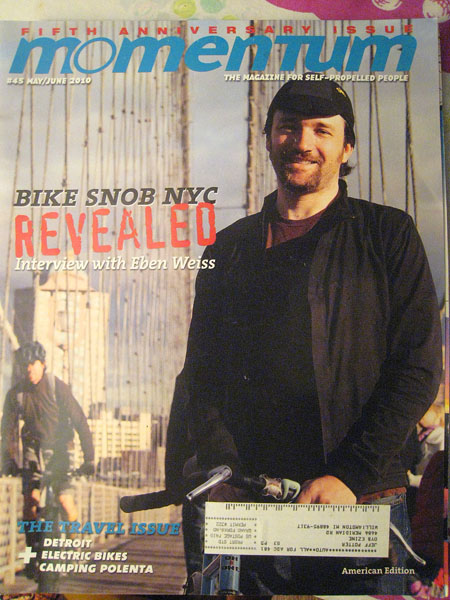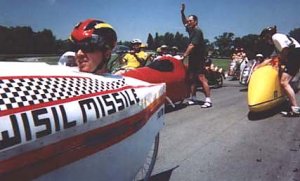This is a nifty part of a cross country cycling report from a 60 year old cyclist. It’s basically a cultural reflection followed by a comparison of a few of the popular ways to cross the country.
Part 3 of Jim Kellett’s report on his cross country ride.
In Louisiana, I stopped for a coke at a little country store where one of the natives and I discussed the reason(s) a person would ride a bike from coast to coast. Early in the conversation, he asked how much I was getting paid for this. After fifteen minutes of talk, he remained unconvinced that >I< was actually paying someone else for the privilege! A major credibility gap. But the best reason for such an undertaking I discovered only after I had nearly finished the ride.... a reason I never considered before. It's educational. Although I'm 60 years old, have three university degrees, have read something every day for over a half-century, visited almost every state in the Union and several foreign countries on either business or for pleasure, and have (I thought) a good understanding of such basics as geography, economics, anthropology, American history, and politics, it took an "up close and personal" experience like this ride to actually UNDERSTAND this fantastic country we live in. I believe I now have a sense of this nation that nothing I had read or
seen or studied for over a half-century had managed to convey.
I recall a story, maybe apocrophal, about Japanese prisoners of war during WWII who were transported by train from their port of entry on the west coast to a POW camp in the east…. they remained convinced even after the war that the Americans had put them in a train and run it around in circles for several days because “no country was that big”. Riding across the US allows the terrain to change, slowly but very distinctly, at a pace that allows reflection and appreciation.
This is really a big country. And so very, very different in its particulars. It is also very hard to articulate what I’m thinking about. Perhaps in part because it is an example of the subtle difference between understanding and “wisdom”. While I know the difference between plains and mountains and basins and piedmonts, it is still a bit of a beautiful revelation to see how the people who inhabit these domains have different lives as a result. And how the politics and economics follow those different lives.
To explain, I risk using cliches that don’t carry the full message…like “there really are a LOT of very poor people in this country, but they are not always unhappy”. And for sure the priorities of the different cultures we shared time with are about as different as one can get! (Like the big church sign on a street in Texas proclaiming Clinton’s sin concerning abortions.)
This particular tour utilized a lot of protestant churches as places to stay, and many of these churches were in small, out of the way towns. We visited one town in Texas with a population of just over 30,000 that had 64 churches! For this secular humanist (and that’s being kind…. what else can a “fallen Baptist” say?) it was surprising to see just how pervasive and important traditional American religion is in this country. Somehow, living in the academic and/or Washington bureaucratic societies for all my life, the fact that rather basic fundamentalist religion is taken very seriously by a very large portion of Americans came as a bit of a surprise. Also, it’s worth noting that this demographic group (the “mainline” Christian protestant religious) is by no means homogeneous! It’s about as eclectic as a political party….. More to come…Jim
This coast to coast tour was supported by “Wandering Wheels”, which has been in the business for decades, and supports two coast to coast rides (among many others) each year. This July, the tour director, Bob Davenport, will lead his fiftieth crossing of the US. The company got its start through the activities of Davenport in providing Christian ministry activities to troubled youth. Although the company’s operations are now purely secular, the logo still shows a cross behind a bicycle, the operations include agreements to sleep in many churches, and there are occasional “ministry” participants going along on the rides (on ours, for example, was a young man doing this tour under a court order in lieu of serving a jail term.) I personally had no problem with all this (but I did rankle at the suggestion that I not open my evening bottle of wine in some church where we were “guests”!!) because the managers were not at all “pushy” or evangelistic about their religious origins. Having said that, the company does attract customers who particularly enjoy this kind of environment, and cyclists who are coincidentally protestant Christians will find the camaraderie of this group especially welcome.
I have taken one other tour, in 1993, totalling 1600 miles from Maine to FLorida, supported by the League’s “Pedal for Power” organization. At that time, it was headed up by Doug Torosian (the late John Torosian’s son) who has since split off from PfP and started his own touring company. My observations on this group may have some applicability to either the current PfP organization and/or Doug’s new company, but obviously things have changed since I took that ride, so be forewarned.
On the latest tour, I had the opportunity to talk at length with experienced tourists who have traveled with another large company, “Cycle America”. Some comments which follow are taken from my translation of their experience,but is obviously not first hand. Finally, I’ve been following the progress of Ken and Carol Lyons who are in the process of a coast to coast unsupported ride, both riding recumbents. Their experiences, along with some information gleaned from other solo or team tourists.
The PfP tour was the most luxurious, expensive, and had the hardest cycling. We stayed in motels each night, had luggage in the rooms when we got there, ate in restaurants (excellent), and had snack support in sag stops that precluded lunch unless you were desparate. Averaged 89 miles a day, and started off “hard” right out of the gate. I found the pace difficult, and got REALLY tired a couple of times. On rest days, I was ready to REST! The route selected was sometimes challenging from a traffic perspective, particularly in the northeast, but that’s more a function of the course of the tour than the company that supports it. Cost was about $140 a day, plus another $5 for miscellaneous and snacks, but part of the cost was actually a donation to your partner charities.
The WW tour was the cheapest, had the easier cycling, poorer food, and mediocre accomodations (group sleeping, camping, eating out of a field kitchen, no food at sags). Averaged 72 miles a day, and started off easy so that rigorous training beforehand was not so important. The course was thoughtfully laid out to minimize trauma to the inexperienced cyclist (we had one young lady who had never cycled more than 30 miles at a clip on our tour, and she survived nicely!) For me, the pace was a snap, and I always had several hours a day to “tourist” either along the way or at the day’s destination. Cost was about $60 a day for the tour, plus another $20 for miscellaneous and snacks.
CA tours are reported to be hard cycling (sort of like the PfP tours), well supported (motels and restaurants) and moderately priced. Sounded to me more like PfP tours, but maybe a little cheaper because you weren’t raising money for a “cause”. Solo tourists enjoy the freedom to stop when the weather’s bad, go fast when they want to, and sleep in motels or camp as they see fit. (Ken and Carol are currently riding about 35-40 miles a day.) They also have no real recourse if hit with serious problems, (e.g., major mechanical failure) and may find the forced companionship with one other companion tedious after several weeks OR find themselves really lonely after days in some of the more remote sections of the country. Solo tourists lack the sense of safety in riding with a group, but group riders often generate hostility if the group is large and/or some of the members are poor and/or discourteous riders. Take your choice! Having tried two kinds of supported touring, I find I personally much prefer the more luxurious (but more expensive) motel based touring. After a couple of weeks, I got really tired of eating oatmeal out of a plastic bowl in the rain and getting flooded out of defective tents! But, frankly, I’m not sure I could afford to travel the way I’d like to, so like everything else in life, there’s some major compromises to consider. Questions? Jim is in….



